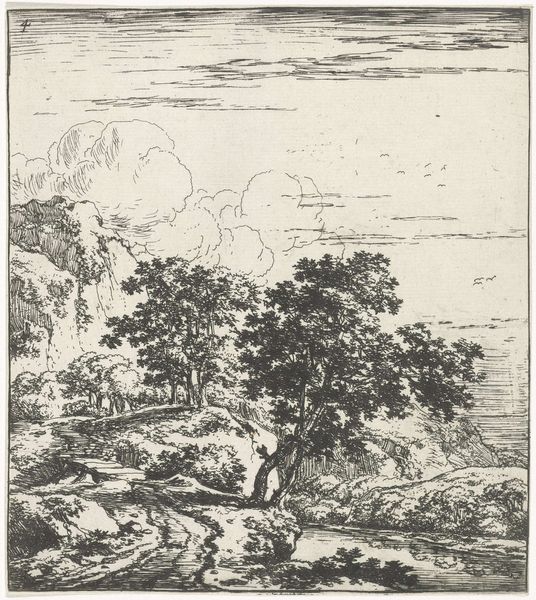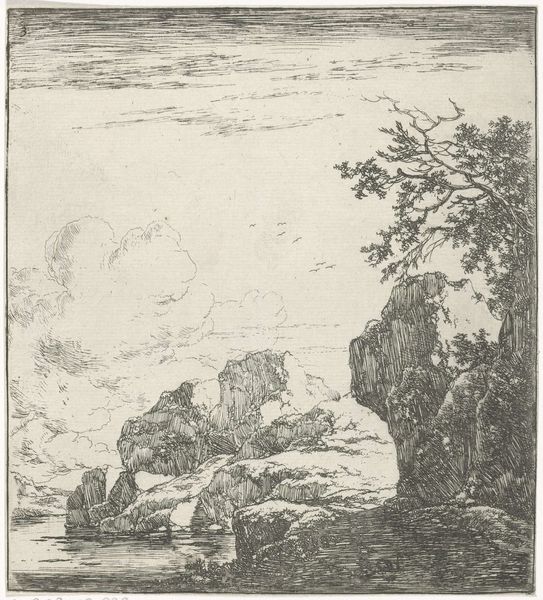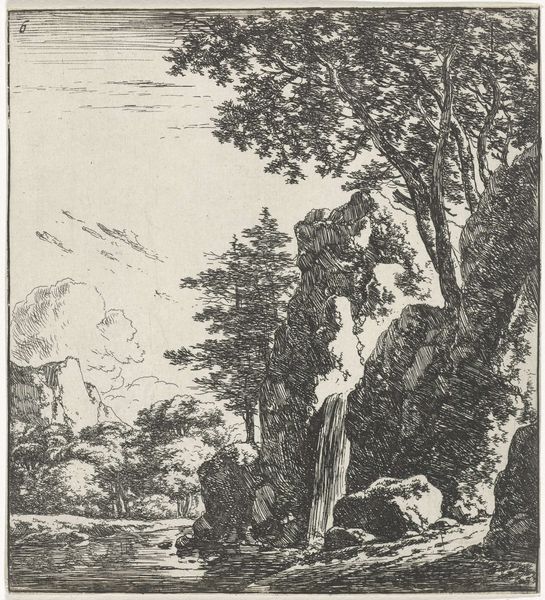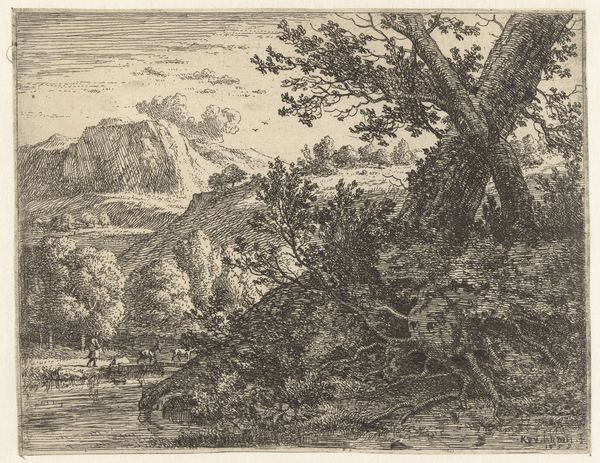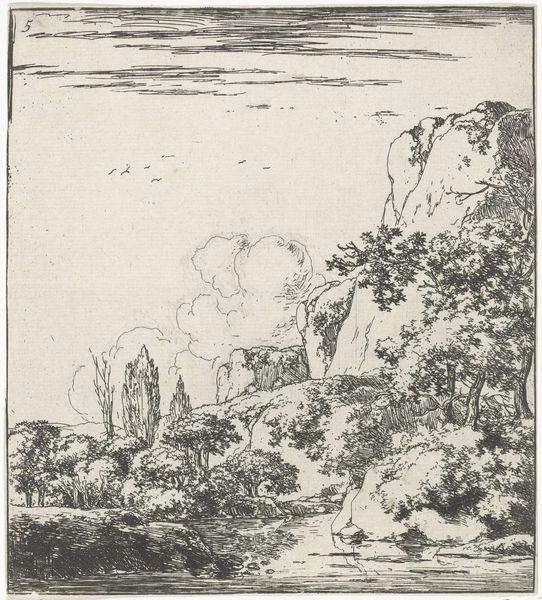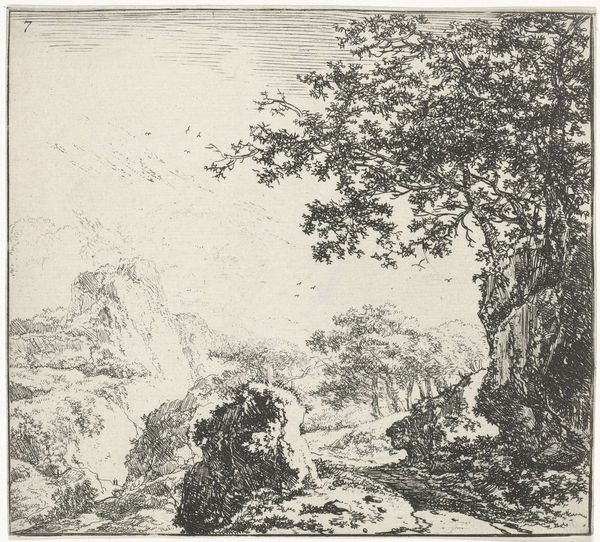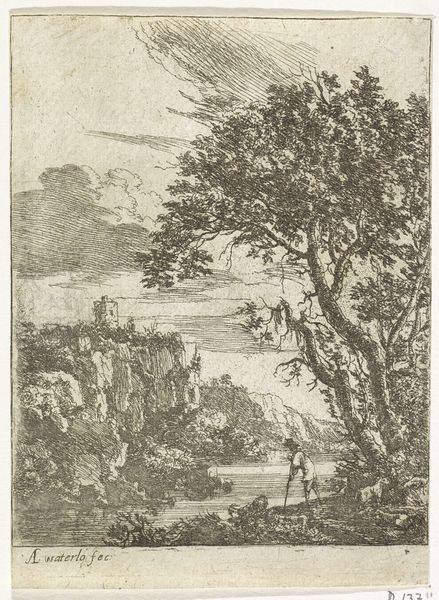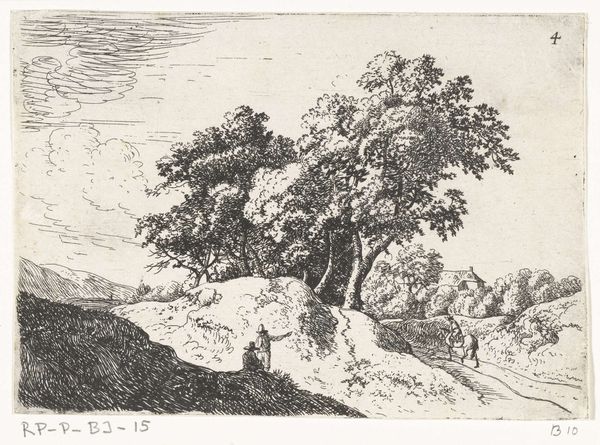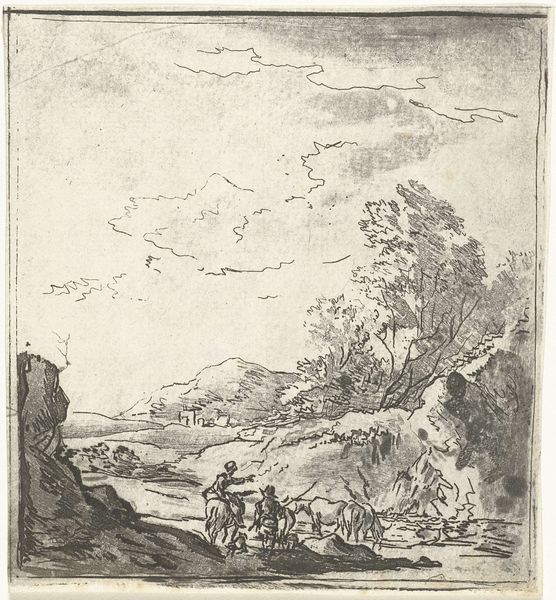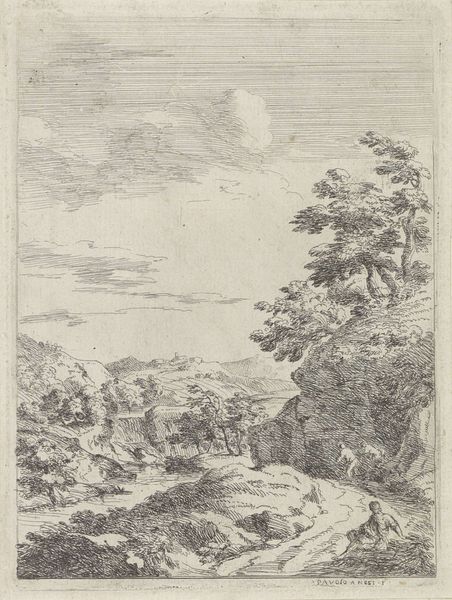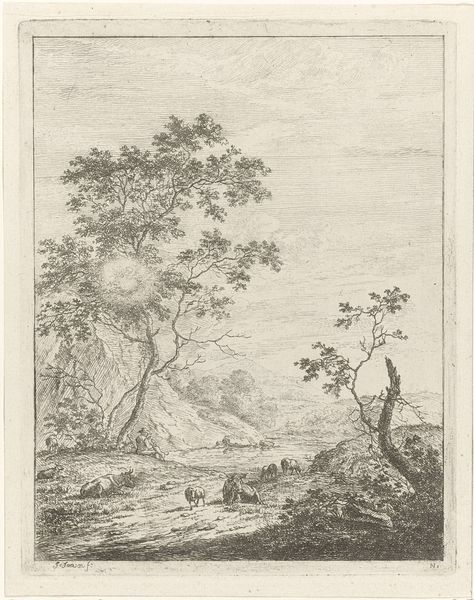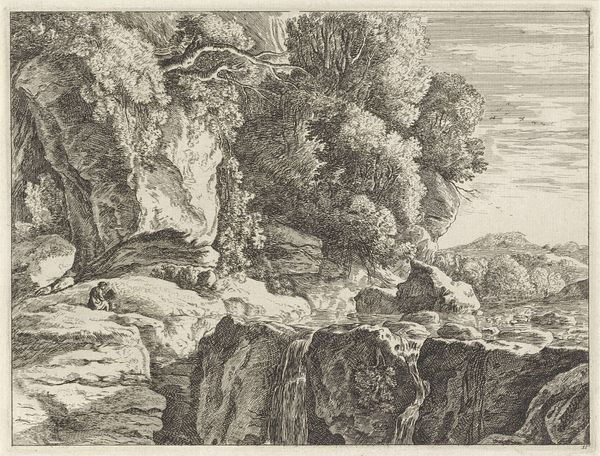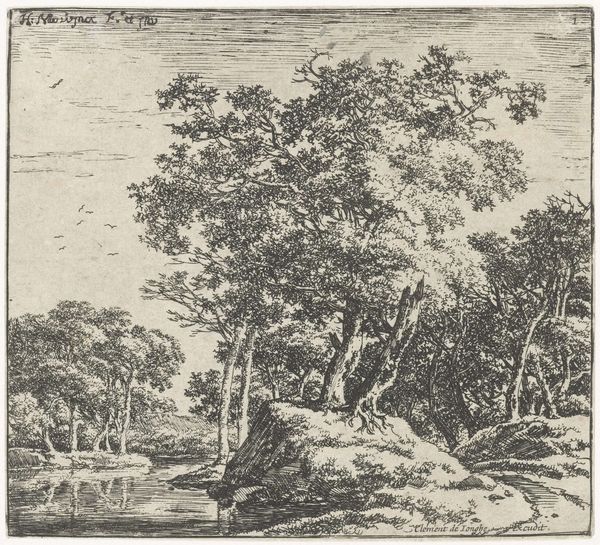
drawing, etching, ink, pen
#
tree
#
landscape illustration sketch
#
drawing
#
ink drawing
#
pen drawing
#
dutch-golden-age
#
pen illustration
#
pen sketch
#
etching
#
pencil sketch
#
landscape
#
ink
#
rock
#
ink drawing experimentation
#
pen-ink sketch
#
pen work
#
pen
#
pencil art
Dimensions: height 134 mm, width 123 mm
Copyright: Rijks Museum: Open Domain
Curator: Here we have "Trees at the Foot of a Rock," an etching attributed to Herman Naiwincx, likely created sometime between 1633 and 1670. Editor: My first impression is of starkness. The use of line is so direct, almost brutal. There's a tension between the detail in the foliage and the looming rock face. It makes me feel small, a bit exposed. Curator: Naiwincx was working within a very particular artistic milieu. The Dutch Golden Age saw an explosion of landscape art, fueled by a new sense of national identity and pride in the Dutch countryside. His works fit into a developing market culture keen to reflect such national sentiment. Editor: Interesting. Because for me, looking at this, it goes beyond mere documentation. It feels almost...foreboding. Is it perhaps pointing towards themes related to power or lack thereof, class differences maybe, if the land as depicted becomes the central symbol of status and control? Curator: The prevalence of landscapes served also another purpose—as reflections of civic and mercantile ideals and authority, not purely of class as in the feudal era. What one could extract from the land, became also a measure. So how do we tie this idea with what you call "foreboding?" Editor: Well, look at those stark lines describing the rock, right beside the organic, sprawling detail of the tree. This dichotomy suggests that something somber lurks within apparent Dutch Golden Age prosperity. Curator: A strong claim, though it raises questions, right? How accessible such reading would be to contemporary audiences? The lines and detailed renderings may indicate, simply, close observation from nature and keen artistry... not some deeper sense of angst. Editor: Maybe, but perhaps we underestimate the ability of people to interpret visual cues through a subjective prism, especially when they involve representations as strong as those of land and resources. Anyway, I keep wondering about Naiwincx himself, as an artist in that very interesting period of history... Curator: Indeed, such pondering over an artist and his historical positioning may open very fruitful conversations. Thanks for such inspiring musings. Editor: Likewise! I hadn't thought of this artwork quite the same way before our little discussion.
Comments
No comments
Be the first to comment and join the conversation on the ultimate creative platform.
